How did you learn the order of the colours of the rainbow? In my case, even though it was more than fifty years ago, I still remember the mnemonic: Richard of York gained battles in vain. I’m still not really sure who Richard of York was, nor who he was fighting, but ever since childhood I have known that the colours progress from red (outermost), through orange, yellow, green, blue, indigo, to violet (innermost).
These haven’t changed, certainly not since humans started to migrate from east Africa, and every observant visual artist has seen the same rainbows as you and I, and Isaac Newton. But it was not until 1762 that Newton first established scientifically the order of colours, and even then he only noticed five, adding orange and indigo slightly later.
In the Renaissance, there was little interest in painting realist or realistic landscapes, let alone capturing transient effects such as rainbows, no matter how wondrous they remain even today. There were occasions when a rainbow was mandatory in a religious work, perhaps, such as its symbolic role for the new covenant with the Old Testament God after the Flood.

This wonderful watercolour from the Augsburger Wunderzeichenbuch from about 1552 illustrates that covenant, but paid no attention to the order of colours seen in nature.
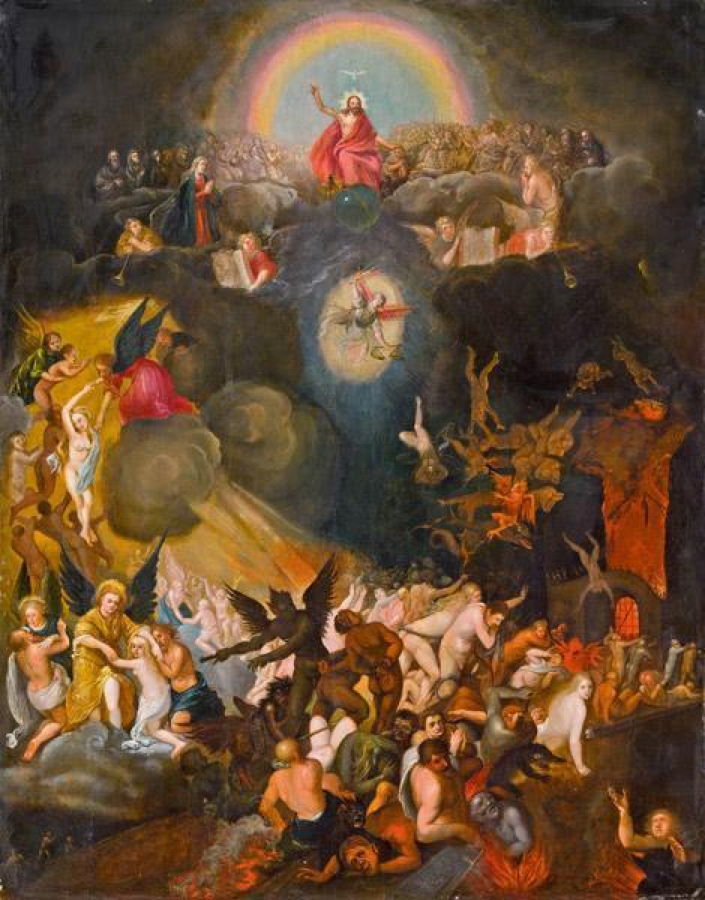
Also from the sixteenth century, Crispin van den Broeck’s The Last Judgment is similarly unnatural.
With the Age of Enlightenment in the eighteenth century came greater efforts to show nature more faithfully, and many painters did exactly that when forming their rainbows. There were still some exceptions, notably local artists who decorated churches and other buildings.

In 1730, Johann Georg Schall painted the ceiling fresco shown above in the church of St. Philippus und Jakobus in Bergatreute, and in 1770, Joseph Christ painted a ceiling fresco in the Catholic Church of St. Anna in Dinkelscherben, below.
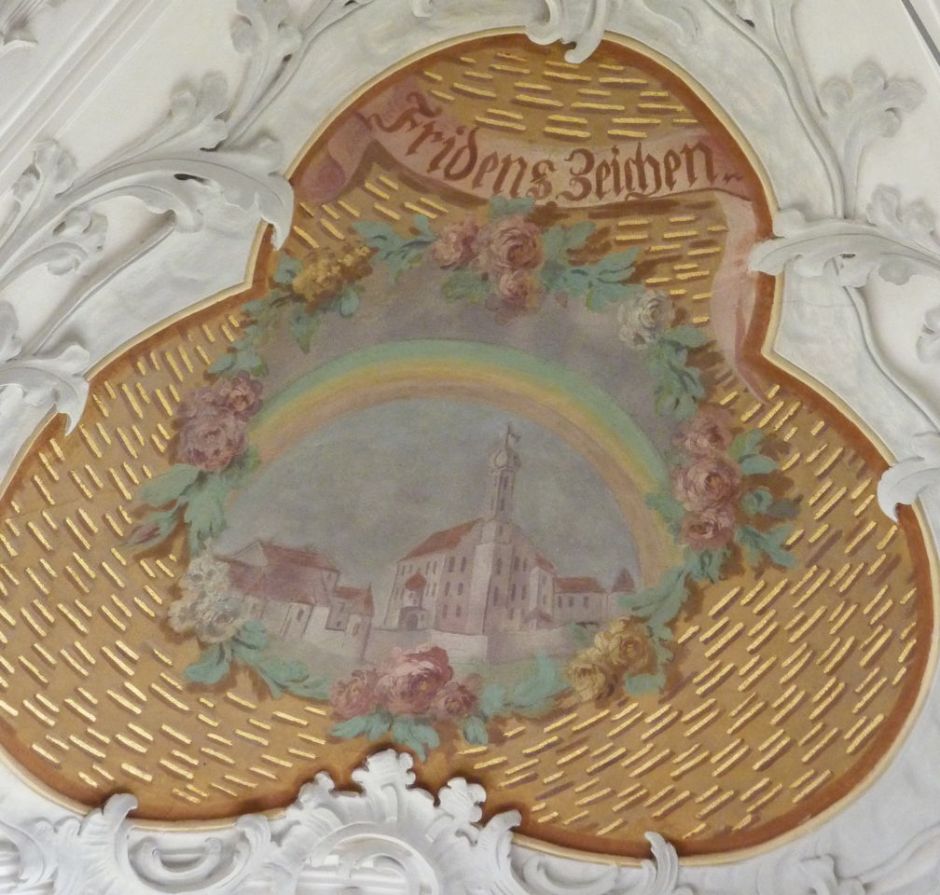

By this time, Newton’s objective knowledge was being spread far and wide, but it obviously did not reach the engravers Caspar Wolf, Charles-Melchior Descourtis, and Rudolf Samuel Henzi when they made this colour print of Chute de la Tritt in 1785.
William Blake is a fascinating problem here. Although never known for realist or naturalistic art, preferring to paint his visions rather than what appeared in nature, until about 1803, he painted rainbows with their colours in the correct, Newtonian order.

Then, according to John Gage, Blake saw George Romney’s painting Newton and the Prism (1794), and decided to paint his rainbows in the exact reverse order from them on.

Blake had a great respect for Newton as an intellectual and scientist, but saw (and painted) him as a prime example of the soulless world without vision. I wonder whether his reversing the order of colours in the rainbow was less influenced by Romney’s painting, and more a statement against science.
There were other artists who, even in the nineteenth century, just seem to have got the order of colours wrong.
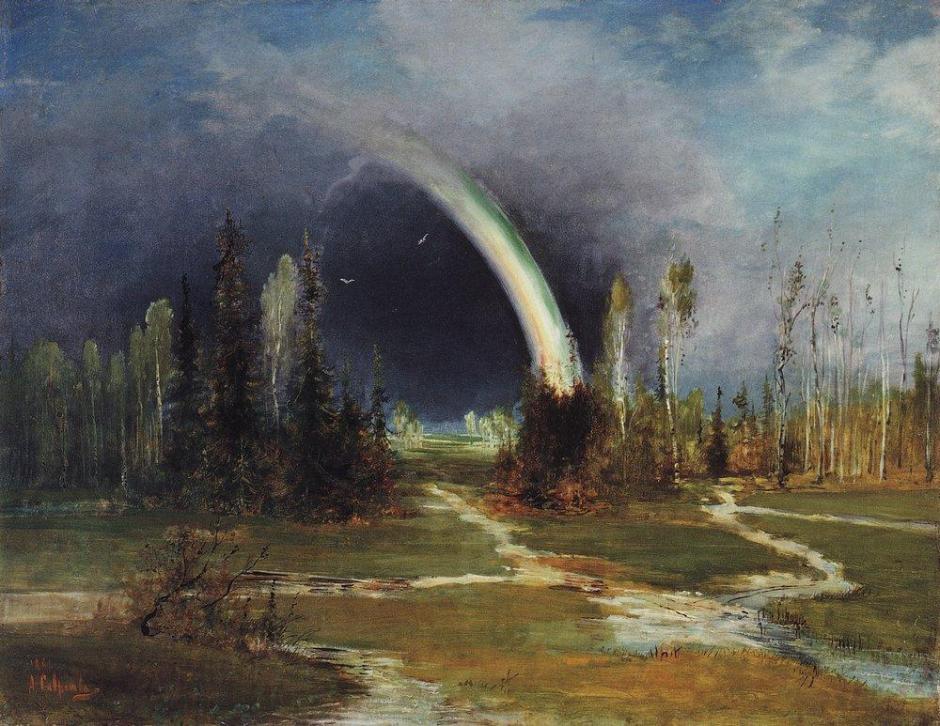
Alexei Savrasov did in his Landscape with a Rainbow (1881).

So too did Konstantin Fyodorovich Bogaevsky in his rather later Rainbow.
Double rainbows
I don’t recall being taught anything about the order of colours in double rainbows. Naïve logic might argue that the secondary bow, the outer one, should have the same order, with red outermost. In fact, the order is the reverse of normal, with red innermost, as shown so clearly in Eric Rolph’s photo from Alaska, below.


One of the best-known paintings featuring a double rainbow is John Millais’ The Blind Girl of 1856, which gets the order correct.

You can also expect the great nineteenth century landscape painters to get this right, as did Frederic Church, whether in his Rainy Season in the Tropics of 1866 (above), or The Aegean Sea (c 1877), below. Both feature superbly faithful depictions of double bows.

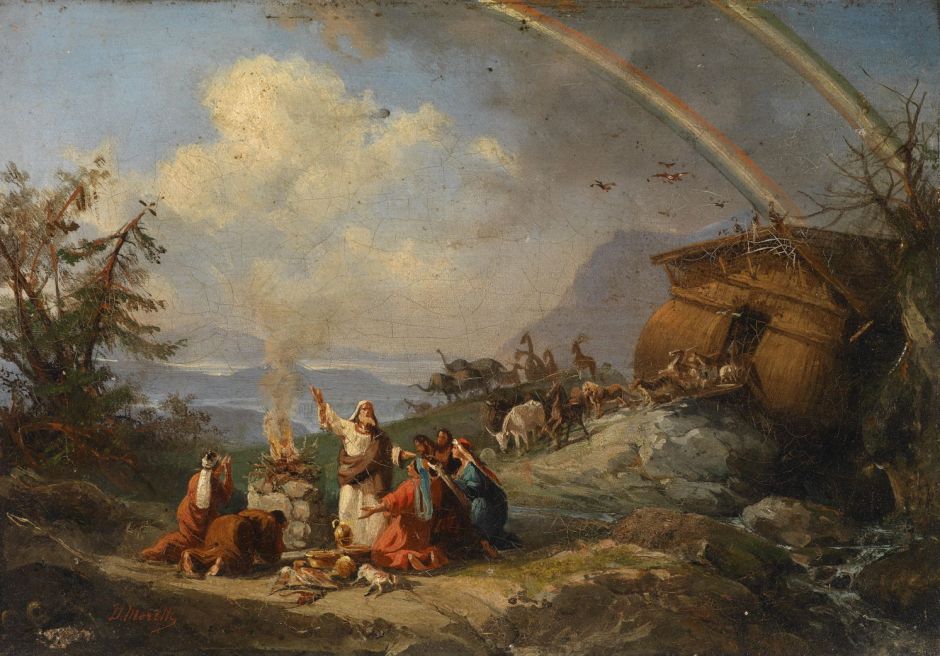
The same can be said of Domenico Morelli’s depiction of the aftermath of the flood, in his undated Noah’s Thanksgiving after Leaving the Ark.
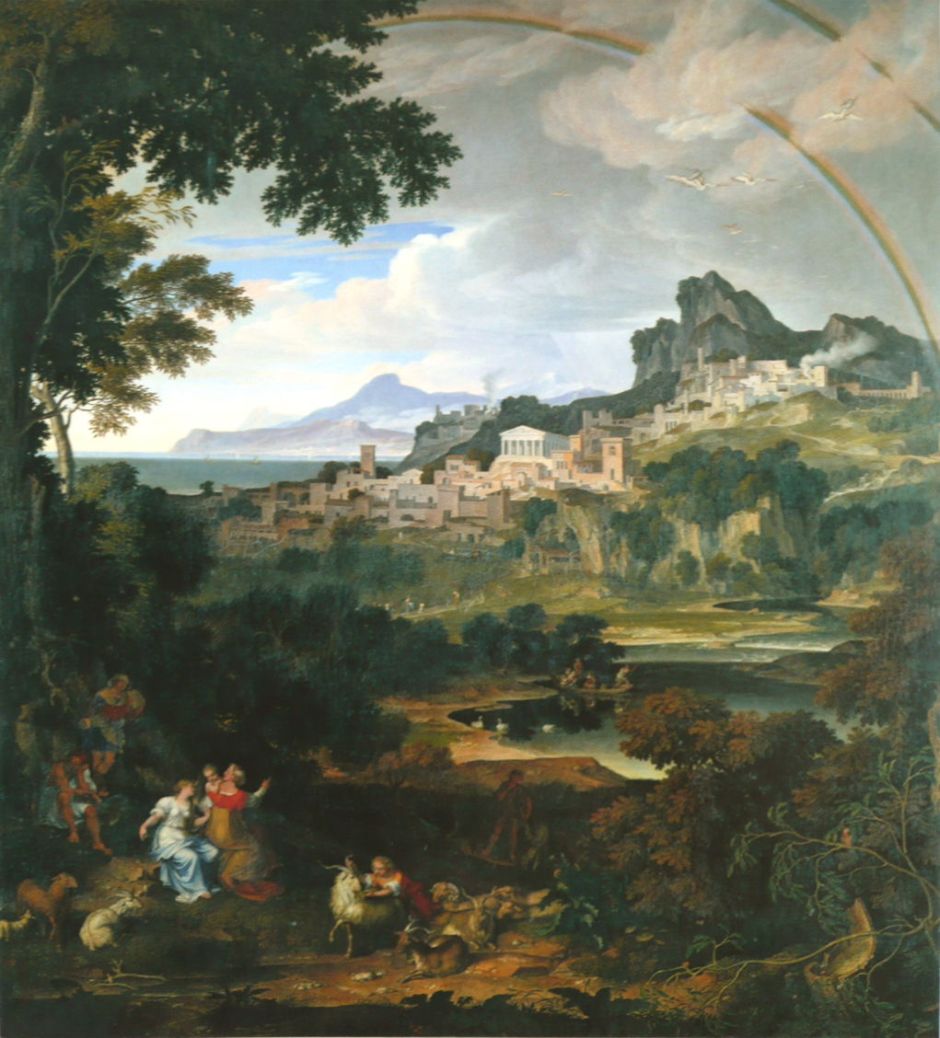
But double rainbows have caught a few artists out. Joseph Anton Koch’s Heroic Landscape with Rainbow (1812) seems modelled after Poussin’s idealised landscapes, but shows both primary and secondary bows with the same order of colours, which never occurs in nature.
Once we move into the twentieth century, all bets are off again. Those who practised faithful realism generally showed the order of colours as seen in nature. Others didn’t even feel constrained to the seven colours of my old mnemonic. Richard of York had certainly gained that battle in vain.

